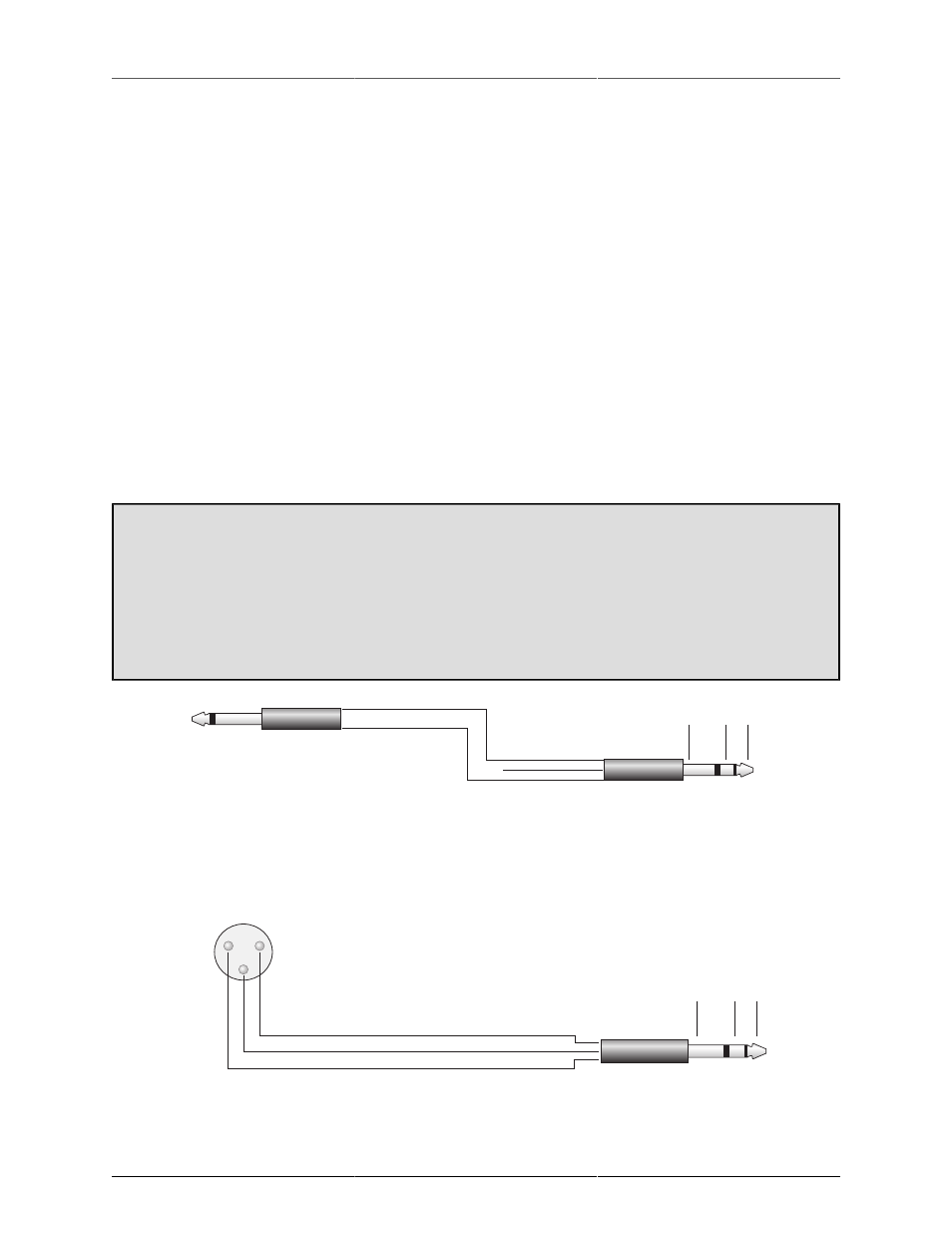Telescoping shield cable for instruments, 76 6.14. xlr to balanced trs cable – Metric Halo Mobile I/O User Manual
Page 76

ULN-2 Users Guide
76
2. The DI amp which is fed by the TRS portion of the combo connector.
3. The TRS return jack. This is a line level input which is the shortest path to the A/D converter.
Each input path is optimized for specific sources, but each is capable of handling a wide variety of sources.
For example, both the Mic amp and the DI amp are capable of receiving Line level inputs. Additionally the
DI input is capable of 63 dB of gain and can be used with dynamic microphones (phantom power is only
available with the Mic Amp).
Feel free to experiment with the different input paths and choose the one which works best for a given appli-
cation.
Whenever possible, use balanced interconnects with ULN-2. The performance of balanced interconnects is
much higher and much more resistant to noise interference and electrical (power) wiring problems. The ex-
pense of balanced interconnects is not substantially higher than unbalanced connections, so if the gear that
you are interfacing with supports balanced connection — use it.
If you cannot utilize balanced interconnects, there are connection schemes that you can use that will maximize
performance.
On input, at line level, it is sufficient to simply use standard unbalanced (TS) connections. If you are interfacing
with the ULN-2 XLR inputs, you will need to ensure that pin 3 is grounded in the unbalanced adapter cable.
The ULN-2 XLR inputs are all wired pin 2 hot and the 1/4” inputs are wired Tip hot.
TIP:
To use the ULN-2 TRS input with guitar or bass, you can simply use a standard TS guitar cable (patch
cord) and it will work fine. However, you can take advantage of the balanced input design of the ULN-2
to get more noise rejection than you thought possible on a guitar input.
In order to do this, you will need to make a pseudo-balanced telescoping shield guitar cable. This can
be constructed with a TRS connector, a TS connector and balanced microphone cable. This cable will
treat the guitar as a floating balanced source and provide a telescoping shield from the ULN-2 ground.
Sleeve (Shield)
Tip (Hot)
Ring (Cold)
Tip
Sleeve
Instrument
Mobile I/O
Sleeve Ring Tip
Figure 6.13: Telescoping Shield Cable for Instruments
If you want to use the TRS inputs with balanced microphones, you will need an XLR female to 1/4” TRS bal-
anced plug adapter cable. These are available commercially, or you can construct one easily. The connections
are Tip to Pin 2, Ring to Pin 3 and Sleeve to Pin 1:
1
2
3
Tip
Ring
Sleeve
Sleeve Ring Tip
XLR CONNECTOR MALE OR FEMALE
BALANCED TRS 1/4" CONNECTOR
Figure 6.14: XLR to Balanced TRS Cable